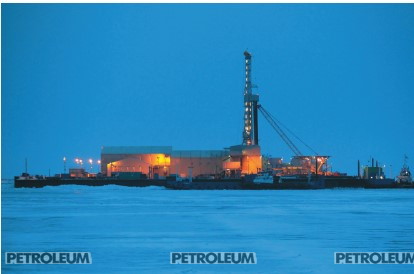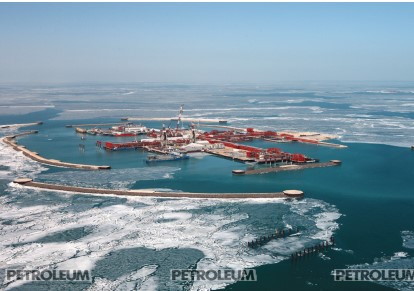Projects
The Perspective is Not Yet in Sight
At the end of last year, the Kazakhstan’s Ministry of Energy signed an agreement with the NCOC and companies engaged in the North Caspian Sea PSA, which settles a number of industrial, financial and environmental issues that had accumulated over the past few years. Neither party does not disclose details of the agreement referring to its confidentiality, but it is clear that the parties are actively searching for compromise in order to begin commercial production at the offshore Kashagan field as soon as possible, where Kazakhstan pins its hopes on increase oil production in coming years.
Kashagan Is In the Red

Thanks to Kashagan, which was scheduled to begin development as early as in 2005, Kazakhstan had intended to enter the top 10 states in terms of the production rate. However, already at the end of 2003, the project operator – Agip KCO – announced that the first commercial production is postponed for a year, and a couple months later it announced another postponement on 2007. It was anticipated that in 2010 Kashagan will produce 21 million tons of the "black gold", in 2013 – 42 million tons in 2015 – up to 56 million tons.
However, since then the production start has been postponed some more times. Finally, in October 2008, the Republic of Kazakhstan has signed the Second Supplementary Contract to the North Caspian Production Sharing Agreement dated November 18, 1997 with the parties of the North Caspian Project. According to the document, the underwriting share of NC KazMunaiGas was increased to the level of a principal shareholder, from 8.33 % to 16.81%. At the same time, the parties have established that if commercial production does not take place until October 1, 2013, then all the consortium’s capital expenditures made later than this date will not be reimbursed.
On September 11, 2013, production at Kashagan was started. But as early as on 25 September it was stopped because of a gas leak in the pipeline. On October 6, the production was resumed, by October 8 it has reached commercial rates specified by the agreement, i.e., 75 thousand barrels of oil per day. However, on the following day, October 9, it was suspended again following hydrogen sulphide leaks from pipes going from the field to the processing complex on land. According to the first Vice Minister of Energy, Uzakbai Karabalin, current investigation into the causes of the pipelines’ breakage is being completed, the final report will be published in 2015. According to preliminary information, the main cause of cracking of the tubes and welds was presence of hard spots that are more susceptible to acidic environment under pressure.
The Kazakhstan part has taken hard the accident at Kashagan just after the start of commercial production. And this a reaction is understandable. First, Kashagan oil already has been taken into account in forecasts for 2014. At the year-end, the country produced over 1 million tons of oil and condensate less than in 2013. According to the Minister of Economy and Budget Planning of Kazakhstan, Erbolat Dosayev, Kashagan’s failure in reaching the commercial production reduced Kazakhstan’s GDP by 0.5% only in 2014. Here can be also added tax payments that failed to replenish the National Foundation, which recently is actively spent for a new economic program Nurly Zhol, and social needs.
The costs in public image can be added to the financial loss. “We communicated with the global news agencies. They say that 75% of material read in connection with Kazakhstan in the last 2 months, is about Kashagan. This is public image. This is in a sense an investment face, a symbol of our country," the head of the National Bank Kairat Kelimbetov said last summer at the international PR Forum in Almaty. And the image of Kazakhstan as a sort of oil Klondike as a ‘field miracles’, where you can bury a dollar, and to dig out ten dollars after a couple of years, was extensively cultivated for all these years by Government PR-specialists, turned out to be rather prejudiced. Today, investors, who invested in Kashagan 17 years ago, are no longer sure that this is a very attractive and super-profitable project as it was in 1997.
Time of Reciprocal Claims

According to independent Russian experts analysing the confidential Kashagan contract, investment in phase 1 of the project, which already amounted to about 45 billion US dollars and will continue to rise,will be recovered for investors 9 years after the start of production (in a best case scenario of world oil prices and favourable macroeconomic situation in the country) or in 15 years, if the scenario is worst-case. In addition, each year of the production delay reschedules pay off for 3 years. Given that the North Caspian Production Sharing Agreement (PSA) was concluded until 2041, it is not surprising that, according to well-informed oil circles, two shareholders of the project - Shell and ExxonMobil - in the last year posed a question directed to the Government of Kazakhstan on extension of the PSA for another 20 years.



